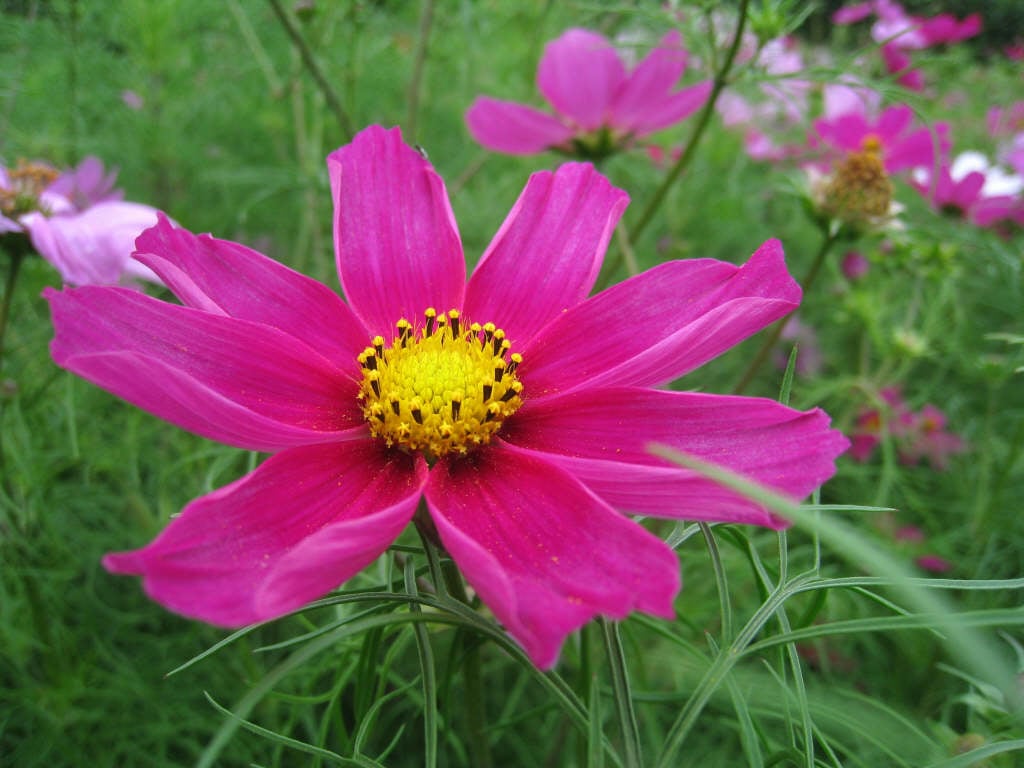Cosmos bipinnatus
cosmea
A tall, bushy annual to 2.5m, with very finely divided, mid-green leaves, and large flowers to 8cm across, usually white or pink the wide outer rays surround a central disc of tightly clustered, usually yellow, inner disc florets. Flowering late summer and into autumn, until frost occurs. Many named cultivars and selections are available, including doubles, forms with tubular rays, and picotee colours
Synonyms
Bidens formosaSize
Ultimate height
1.5–2.5 metresTime to ultimate height
1–2 yearsUltimate spread
0.1–0.5 metresGrowing conditions
Moisture
Moist but well–drainedpH
Acid, Alkaline, NeutralColour & scent
| Stem | Flower | Foliage | Fruit | |
| Spring | ||||
|---|---|---|---|---|
| Summer | Pink White | Green | ||
| Autumn | Pink White | Green | ||
| Winter |
Position
- Full sun
Aspect
West–facing or South–facing
Exposure
Exposed or Sheltered Hardiness
H3Botanical details
- Family
- Asteraceae
- Native to GB / Ireland
- No
- Foliage
- Deciduous
- Habit
- Clump forming
- Genus
Cosmos can be annuals or perennials with simple or pinnately divided leaves and large, long-stalked daisy-like flowers in summer
- Name status
Correct
- Plant range
- Mexico, S US
How to grow
Cultivation
Grow in moderately fertile, moist, but well-drained soil in full sun. Deadhead flowers to prologue flowering season. Leave a few seedheads to ripen to selfseed if required
Propagation
Suggested planting locations and garden types
- Cottage and informal garden
- Wildflower meadow
- City and courtyard gardens
- Patio and container plants
- Prairie planting
- Wildlife gardens
Pruning
Deadhead to prolong the flowering season
Pests
Diseases
May be susceptible to grey moulds
Love gardening
Sign up to receive regular gardening tips, inspiration, offers and more
View our Privacy Policy
Get involved
The Royal Horticultural Society is the UK’s leading gardening charity. We aim to enrich everyone’s life through plants, and make the UK a greener and more beautiful place.
